-
Are you a Tarantula hobbyist? If so, we invite you to join our community! Once you join you'll be able to post messages, upload pictures of your pets and enclosures and chat with other Tarantula enthusiasts. Sign up today!
You are using an out of date browser. It may not display this or other websites correctly.
You should upgrade or use an alternative browser.
You should upgrade or use an alternative browser.
bee assassin
-
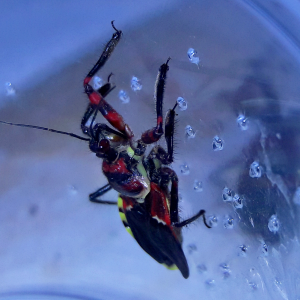
Apiomerus flaviventris- Male
Sexing is easy in this family, as males lack the ventral setae entirely- MBullock
- Media item
- apiomerus flaviventris assassin bug bee assassin hempitera reduviidae
- Comments: 0
- Album: Hexapoda
-

Apiomerus flaviventris- Female
Note the golden ventral patch of setae- this is used to store plant resins for later use and for oviposition. Without a resin coating, the survival rate of the eggs plummets sharply- with most dehydrating and dying inside the egg, or being predated upon by ants.- MBullock
- Media item
- apiomerus flaviventris assassin bug bee assassin hemiptera reduviidae
- Comments: 0
- Album: Hexapoda
-

Apiomerus nymph
I had jumbled my nymphs up on accident. I cant tell if this is flaviventris or spissipes until it grows up- MBullock
- Media item
- apiomerus assassin bug bee assassin harpactorinae reduviidae
- Comments: 0
- Album: Hexapoda
-
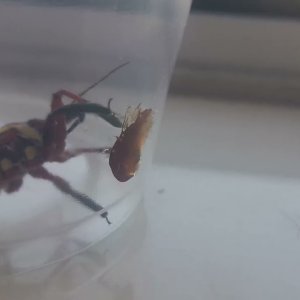
Yellow-bellied bee-assassin collecting resin
Mature female Apiomerus flaviventris collecting plant resin for oviposition. A common host is encelia farinosa, but any kind of aromatic resins should work.- MBullock
- Media item
- apiomerus flaviventris bee assassin hemiptera reduviidae yellow-bellied assasin bug
- Comments: 0
- Album: Hexapoda
-
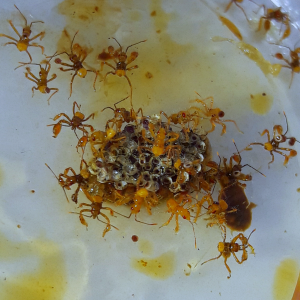
Apiomerus flaviventrus nymphs
Just hatched. Nymphs require access to plant resins at all stages and will not make it to i2 without them.- MBullock
- Media item
- apiomerus apiomerus flaviventrus assassin bug bee assassin reduviidae
- Comments: 1
- Album: Hexapoda
-
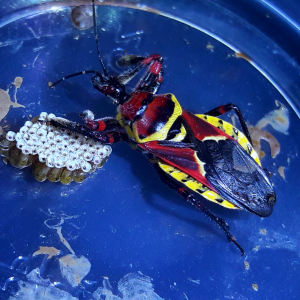
Apiomerus flaviventris with eggs
The apiomerini are an unusual tribe of assassins that utilize plant resins in their predation, ecclosion and oviposition.- MBullock
- Media item
- apiomerus flaviventris assassin bug bee assassin eggs hemiptera reduviidae
- Comments: 0
- Album: Hexapoda
-
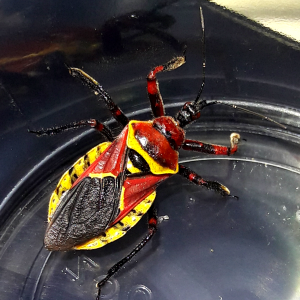
Apiomerus flaviventris female
Bee assassins are a member of the resin bug tribe- these assassins utilize plant resins for hunting and oviposition, having a fuzzy patch of setae on the venter for resin collection.- MBullock
- Media item
- apiomerus flaviventris assassin bug bee assassin hemiptera resin bug
- Comments: 0
- Album: Hexapoda
-
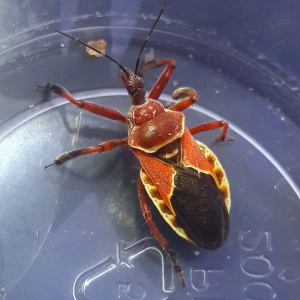
Apiomerus spissipes female
Similar in appearance to flaviventris but lacks the bright yellow venter and has more red. Behavior much the same- frequents tarweed and other asteraceae.- MBullock
- Media item
- apiomerus spissipes assassin bug bee assassin hemiptera resin bug
- Comments: 0
- Album: Hexapoda